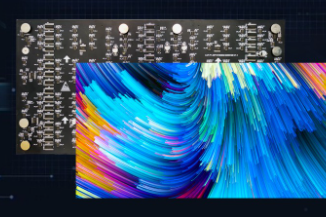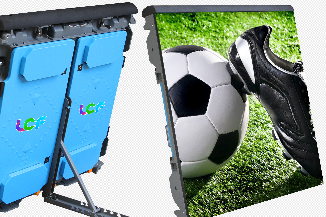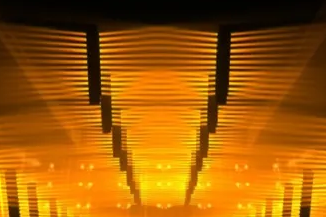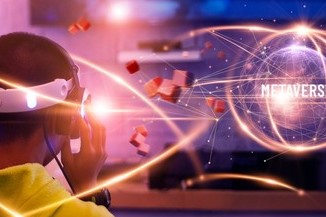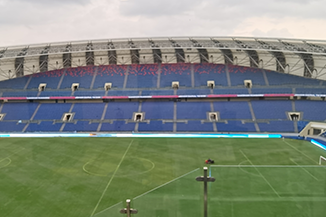Publisher: Supplier of LED Display Time: 2022-03-03 11:17 Views: 2635
With the application of LED displays in stadiums, the installation and design of LED displays in stadiums has become the focus of attention of venues and manufacturers. In this regard, the editor of Lianchengfa summarizes the installation and design requirements of LED displays in stadiums in the following aspects.
1. The safety and reliability requirements of LED display screens. The crowd density of stadiums is large, and the safety performance of the stadium equipment should be put first.
Under normal circumstances, the safety performance of LED display screens in stadiums should meet the requirements of 5.4 in the SJ/T11141-2003 standard, and the reliability should meet the requirements of 5.10 in the standard. In terms of material selection, it is required to choose polymer materials with good flame retardant properties (including LED module shell, LED module filling glue, PCB board, power cord sheath, etc.), and in terms of power supply design, the stadium LED display must be separately Power supply and meet the requirements of 5.8 in the SJ/T11141-2003 standard; cable line construction acceptance must meet the requirements of GB50168, GB50171; engineering quality should meet the requirements of GB50303. In addition, the LED display of sports events should have the functions of smoke detection, lightning protection, automatic fire alarm and automatic screen shutdown, and the power distribution cabinet should have the function of overload protection, leakage protection and step-by-step power-on function.
2. Requirements on the installation location and quantity of the display screen
The installation position of the sports LED display screen needs to ensure that more than 95% of the audience with fixed seats in the venue can effectively watch, and the sight distance and vision are wide. At the same time, it is required that the content displayed on the LED display screen can be easily and clearly seen by the athletes, coaches and referees (except the on-site scoring referees in the diving competition).
Three, LED display maximum viewing distance and character height requirements
The brightness of the full-color LED display in outdoor sports venues is required to be more than 5000cd/square meter; the dual-color display is more than 4000cd/square meter; the monochrome display is 2000cd/square meter or more. The brightness of full-color LED display in indoor sports venues is required to be more than 1000cd/square meter; the dual-color LED display is more than 300cd/square meter; monochrome is more than 120cd/square meter. At the same time, in terms of character height requirements, each character of the LED display screen of swimming pools and diving halls with independent building structures should be at least 0.2m higher than each character, and each character of the LED display screen of swimming and diving halls with integrated building structure should be at least 0.28m higher than each character.
Fourth, the optical performance requirements of LED display
Sports event LED display requires a wide viewing angle, long visual distance, uniform brightness, and adjustable. When the background illumination is less than 20lx, the contrast ratio of the LED display should be able to reach 100e1. The white point chromaticity coordinates can be adjusted within the color temperature of 5000K-9500K according to the use environment. According to the CIE1931 chromaticity system, the tolerance is △x∣≦0.030, ∣△y∣≦0.030.
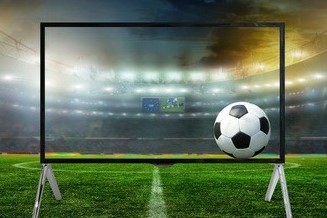
5. The display content of the LED display can be controlled in real time
It is required to have the rolling timing of the real-time display of the game; it can display the rolling game results; it can turn pages to display the game results; the displayed text content can be switched automatically and manually. For a full-color LED display with graphic and video display functions, automatic and manual switching between text and pictures, animations, and live broadcast images should be possible.
In order to ensure the convenient and accurate use of the display screen, the multi-functional gymnasium should adhere to the requirements of high standards, high technology and high quality in the design and manufacture, which can be analyzed from the following aspects.
1.1 High standard materials
Luminescent material. Luminescent materials are the most important materials for display screens, especially full-color display screens. They are the key to ensuring the display effect, high reliability and long life of the display screen. The main reference indicators are brightness and uniformity.
Control the driver chip. The control driver chip is the guarantee of the key design of the display screen. Due to the high technical content of this part and the uneven level of manufacturers, the design of this part should be treated with caution.
Switching power supply. The switching power supply is a component with a high failure rate in the display screen, and a high-quality switching power supply must be used to ensure that it can meet the use requirements of the stadium display screen.
1.2 High-level control technology
The stadium display screen is a large-scale facility serving competitive events. Its control technology needs to integrate advanced technologies in the industry, such as static latching technology, white balance technology, nonlinear correction technology, high grayscale technology, color uniformity technology, Video processing technology, fast moving image compensation technology, full braking control technology, etc.
1.3 Quality assurance of design and installation and commissioning
Gymnasium display screens are generally used in sports competitions and large-scale activities. Any fault or error will have a great impact, so stable engineering quality is the objective requirement of users. In order to meet the requirements, ensure the stable and reliable operation of the display screen, and be foolproof, it is necessary to take quality as the guide in design, production, installation, commissioning, and delivery, and use an effective quality assurance system to ensure the entire production process.
The design, manufacture, installation, commissioning and operation of the LED electronic display must be matched with the venue plane and section of the gymnasium to coordinate the overall effect. At the same time, the power structure of the venue should be fully considered. Generally speaking, it should be ensured that the power supply works normally within the range of (220±22)V and (380±38)V. In addition, all control equipment should be concentrated in one control room, and there should be access ports for control equipment at the referee's bench of various competitions in the venue.
For stadiums with large venues and more than 5,000 spectator seats, two LED electronic displays with an area of 40M2 can generally be built. One of the screens is divided into three parts: the clock area, the full-color area and the dual-color area, and the other screen can be divided into three parts. It is divided into two parts: the clock area and the dual primary color area. Doing so not only ensures the satisfaction of various functions, but also ensures the rational use of funds. If the funds are sufficient, and it is possible to host large-scale gatherings or competitions in the future, the two screens can also be made into full-color screens, so that the playback effect will be more realistic and the atmosphere rendering will be stronger.
2. Analysis of the demand for the display content of the LED display
The multifunctional modern gymnasium can not only be used to hold various sports competitions, but also can be used to hold various large-scale cultural and artistic activities and gatherings, etc. Therefore, the display content requirements of the display screen can be summarized as rich, diverse and real-time, as follows:
2.1 Requirements for live broadcast of video images
Sports competitions, cultural performances, and large-scale events held in the gymnasium can be broadcast live through the electronic display screen, and have special effects such as panorama, close-up, slow motion, flash action, drag image, nostalgic movie and so on.
2.2 Compatibility requirements of multiple input methods
The stadium display screen can not only be broadcast by the camera in real-time in real-time, but also broadcast TV and satellite TV programs, play VCD, DVD, LD and various self-made video signal programs, support PAL, NTSC and other formats, and the display content can also be Various graphic information on the computer, various information from the internal information network of the gymnasium or the public information network; it has the functions of superimposing text information on the TV screen, and can also superimpose text, pictures, animations, etc. on the outside of the video image; , Play relevant background images during large gatherings, etc.
2.3 The demand for colorful graphic information playback
On the one hand, the stadium display screen can be used for live broadcast of video images, and on the other hand, it can display news releases, important notices, and slogans. The display screen can display text, graphics, patterns, animations, etc. Text function.
2.4 Demand for multiple broadcasting methods
There should be pan, scroll, rotate, wipe, pull screen, single/multi-line pan, single/multi-line up/down, left/right pull, up/down, page turn, move, rotate, zoom out, zoom in, blink , window opening and other functions, in order to hold large-scale international sports events and activities, the display screen should be compatible with various languages, such as Chinese, English, numbers and various characters, and there are a variety of fonts to choose from. level zoom.
2.5 Demand for interstitial advertising and display methods
As the most eye-catching display media in the stadium, the full-color display screen in the stadium will inevitably become the first choice for the promotion of the majority of enterprises. Therefore, the needs of the display content should also be fully considered. Insert corporate advertisements to meet the needs of our customers.
2.6 The need for sports competition information and sports results announcement
The release of sports competition information and results is the basic requirement for the electronic display screen to realize its display function. Therefore, the use requirements of various sports competitions should be fully considered in the design, and competition information should be released, such as basketball, volleyball, badminton, table tennis, etc. Weightlifting, gymnastics and other competition information, the country name, team name, name, athlete number and performance record can be displayed in the result announcement; various real-time information can be displayed during the competition, such as the competition team name, score, goal scorer, change The name, number and frequency of the person, the athlete who committed the foul penalty, etc.
2.7 Demand for clock display
Another display function of the stadium display screen is to have an accurate clock display function. The clock display function includes Beijing time, game clock, and countdown display. Different game clocks can be set according to different competition items and referee rules, and the timing can be easily suspended. , reset, fast adjustment, slow adjustment, etc.
2.8 Requirements for audio synchronization playback
The stadium display screen has an audio interface, which can be combined with the audio in the venue to achieve the function of audio-visual synchronization.
high brightness. Because stadium games and events take place during the day or under strong lighting, the display must be bright enough to be clearly visible in strong light.
Moisture, corrosion and heat dissipation. Due to the large size of the display screen, fixed installation, and many wiring connections, special storage methods cannot be used. In addition, it must adapt to the humid, rainy, and high temperature weather that may occur in the installation area. Therefore, to ensure stable and reliable use, it must be designed and constructed. Consider moisture-proof, anti-corrosion and good heat dissipation measures. At the same time, the dustproof treatment of the display screen should also be done.
3. Demand analysis of LED display referee system
The normal service function of the display screen can only be completed with the support of the referee device and the perfect "software". The referee device consists of a timer and a scorer. "Software" should be a complete software package, which must fully support different sports competitions and referee rules.
4. Demand analysis of LED display system
The gymnasium display screen is an important part of the electronic information system of the gymnasium, so the display screen and control system are systematic projects. The computer in the control room, the arena, the referee stand, the referee device, and the news center of the gymnasium are integrated into one to efficiently serve the entire sports competition. It is a systematic design. It is only one of the components, so the compatibility should be fully considered in the whole system design. All interfaces adopt standard interfaces to form a systematic facility for sharing information resources with the network.
